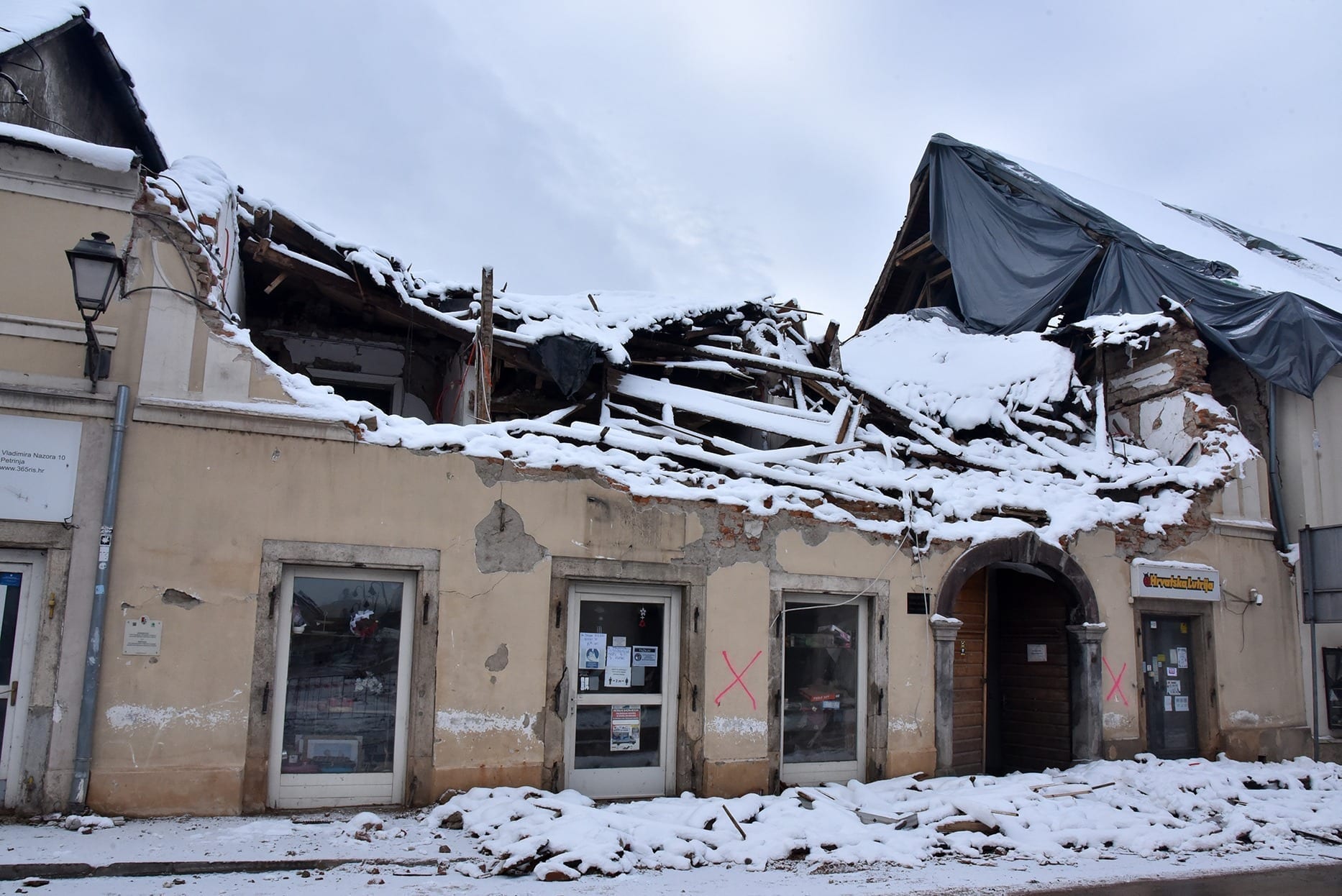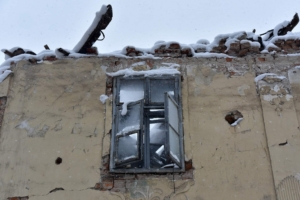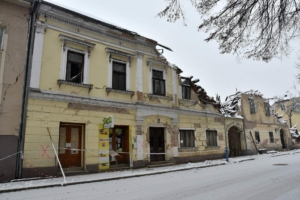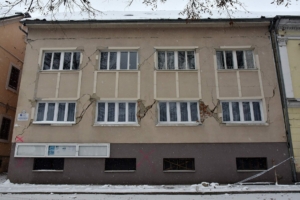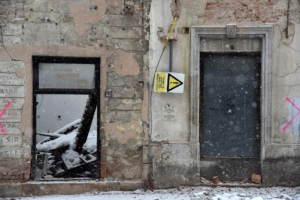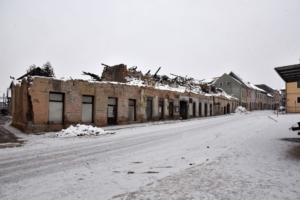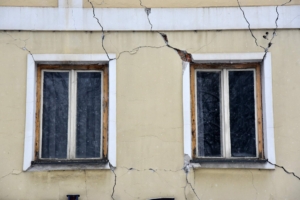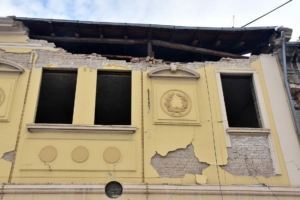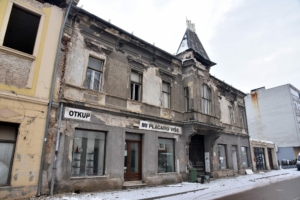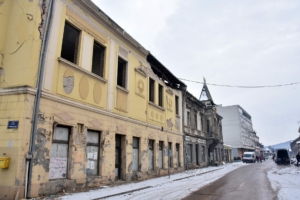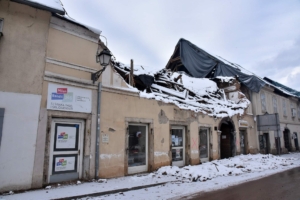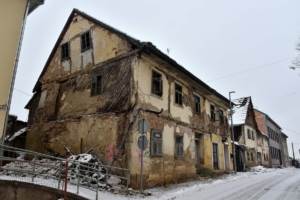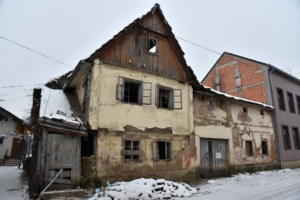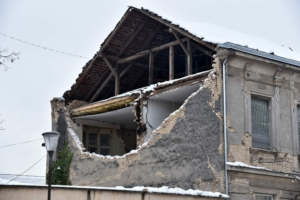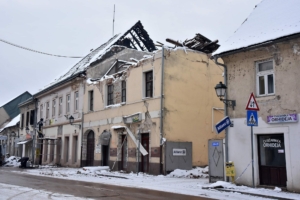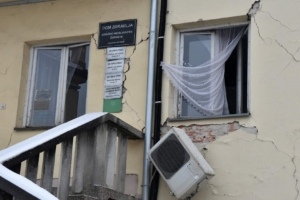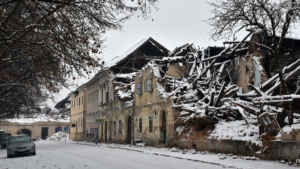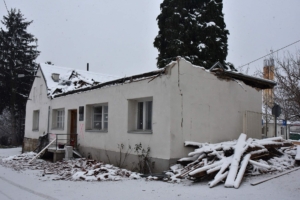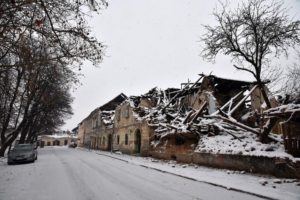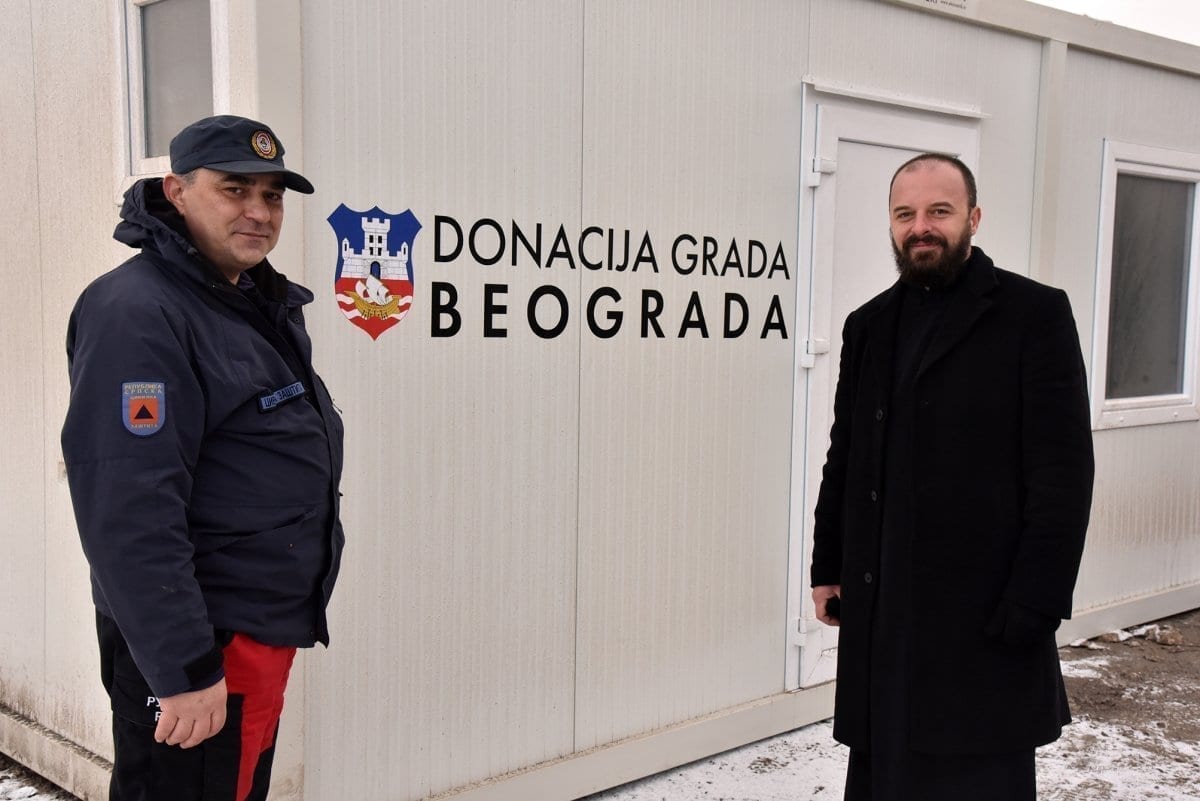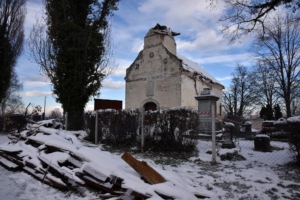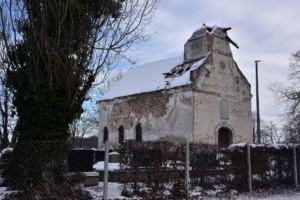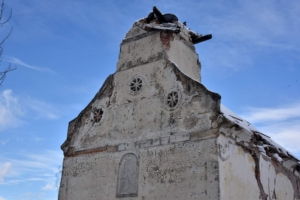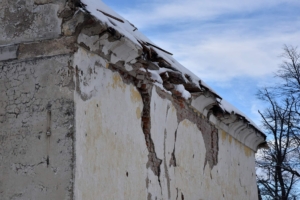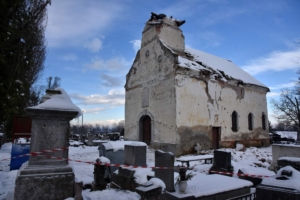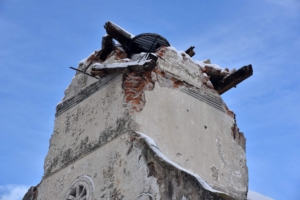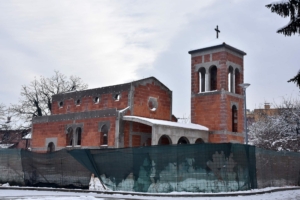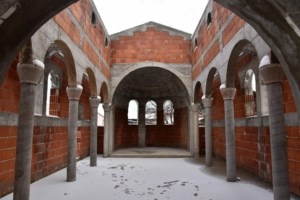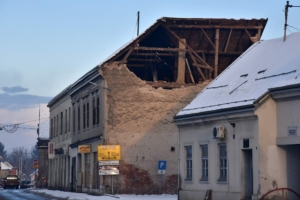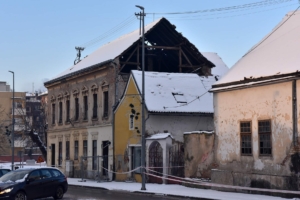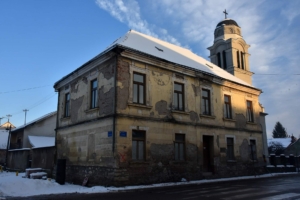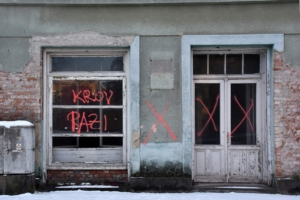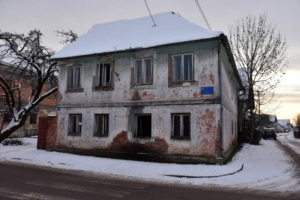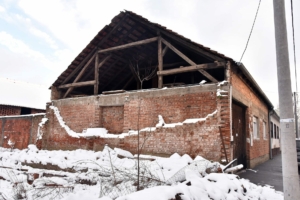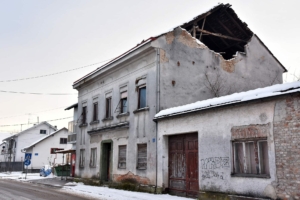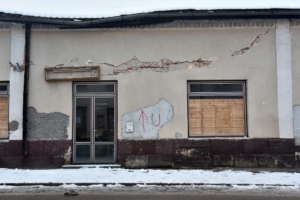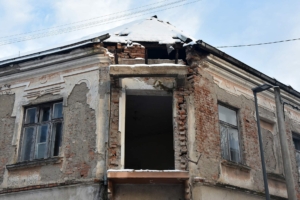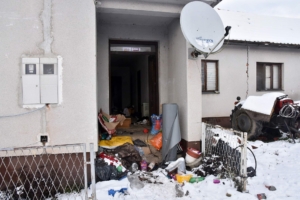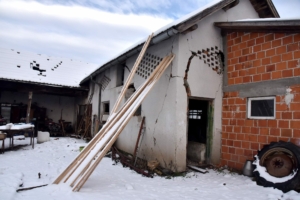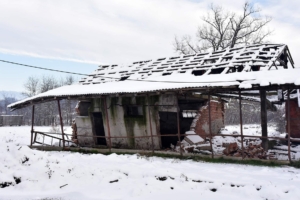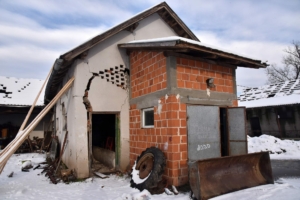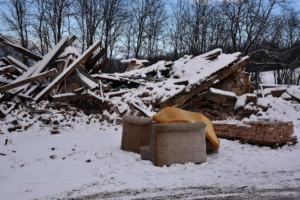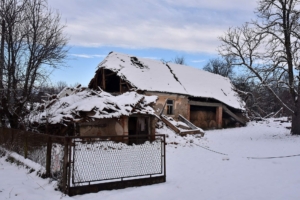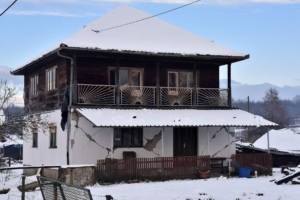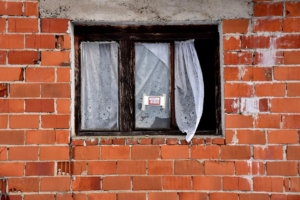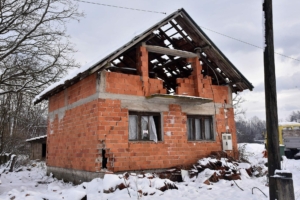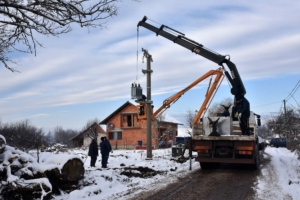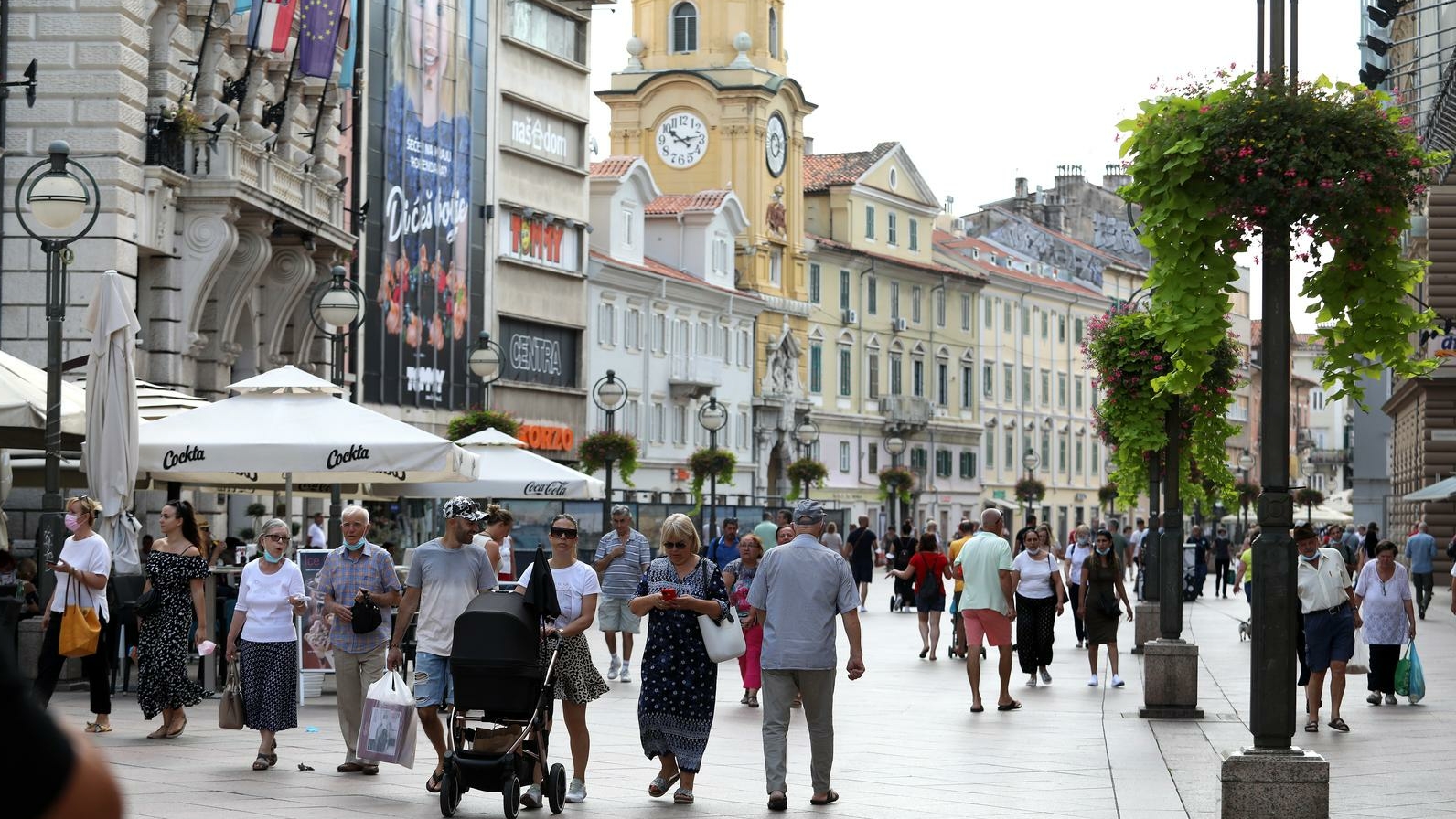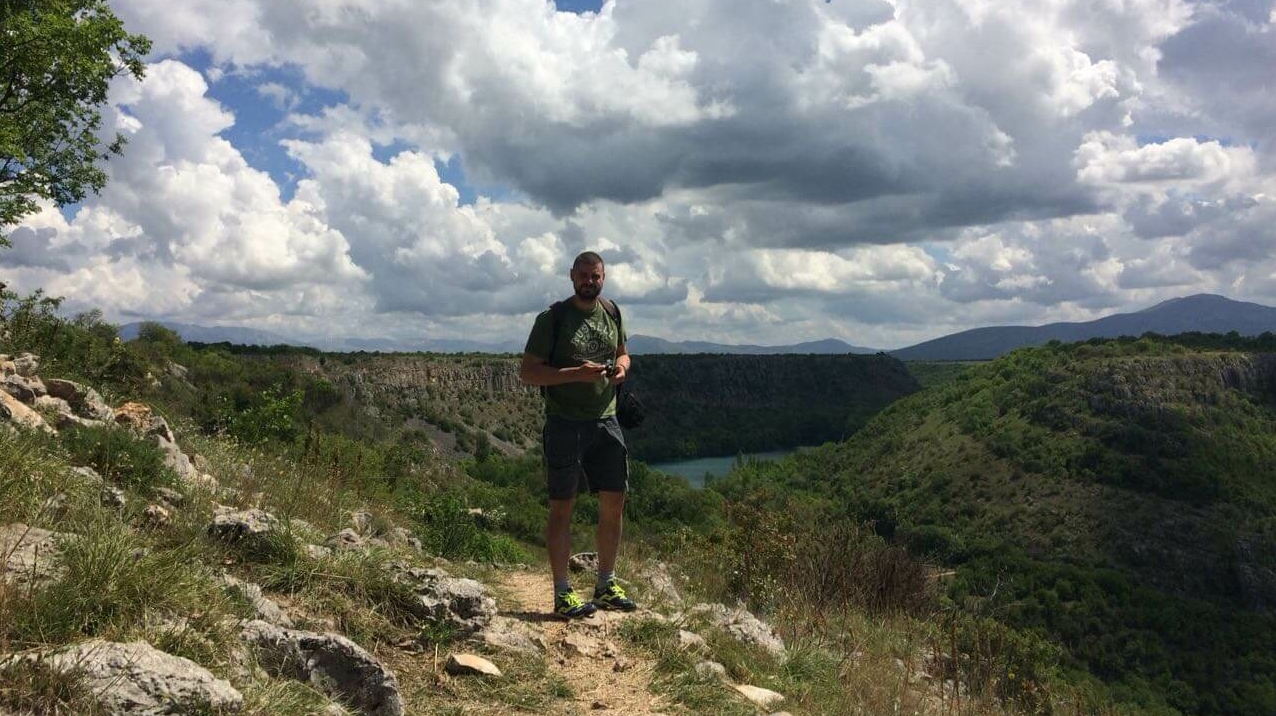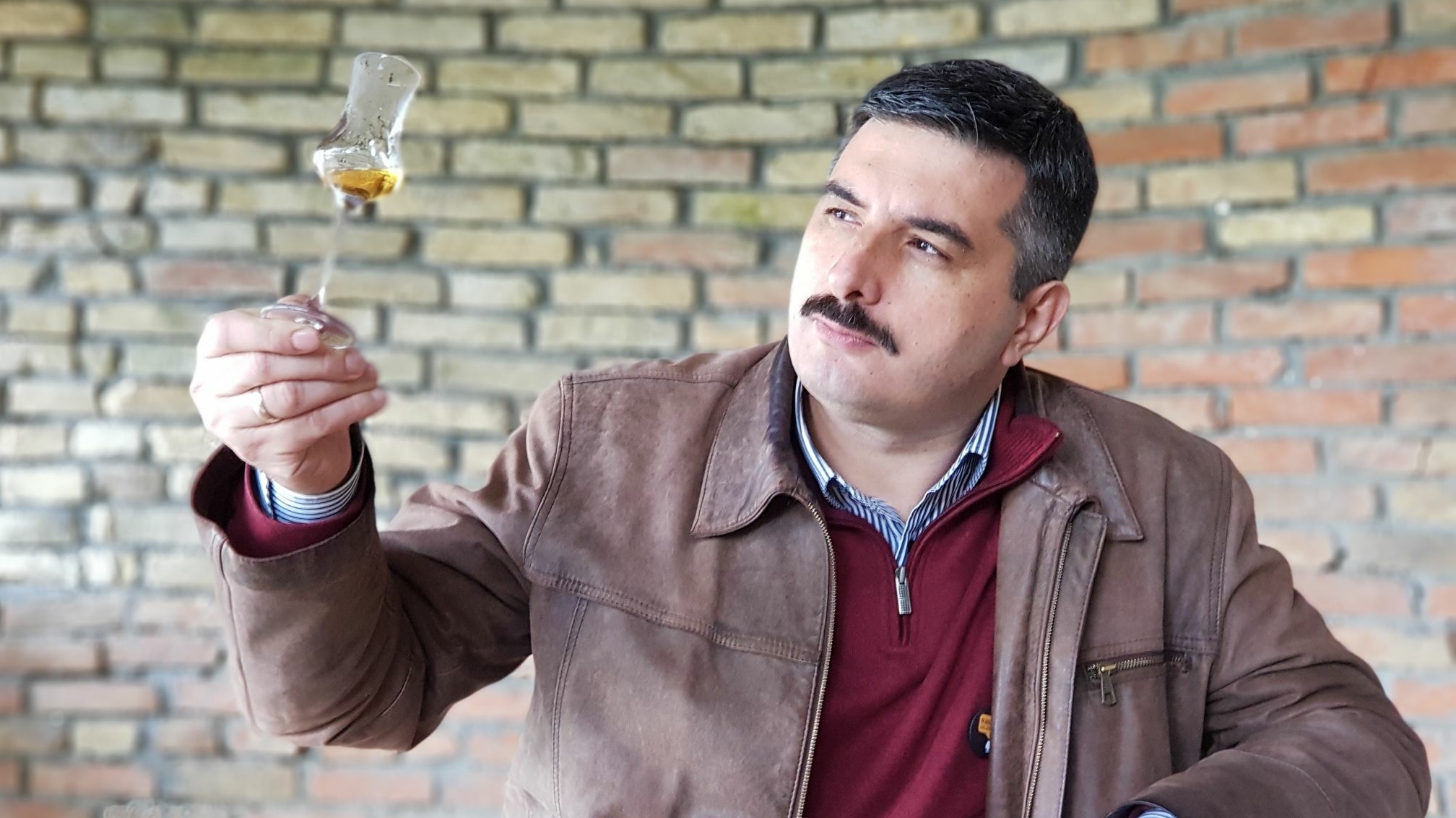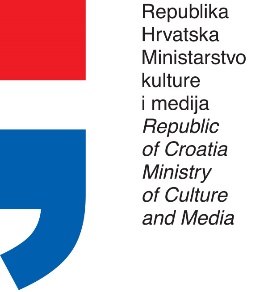“People of Banija love spicy food – they even used to put pepper in rakija to harden themselves for battle,” a middle-aged Petrinja citizen whom we met at the local park tells us some two weeks after the earthquake that devastated Banija at the end of 2020.
Our interviewee, whom we talk to while police officers nearby wait for the arrival of the French Minister for Europe and Foreign Affairs, Jean-Yves Le Drian, asks to stay anonymous, although he clearly knows the past and present of Banija well. “We’ve lost our house, and I don’t need to further complicate my children’s life in this town with my opinions,” he says. He thinks that Croatia has really forgotten about the areas of the former Military Frontier.
“I’m not sure historians are interested in this subject. We know very little about life here through the centuries, about the lives of the people who held a hoe in one hand and a rifle in the other. There aren’t even any travel writers who described it – nobody dared to come near the border because of the constant threat of Turkish attacks, of having to pay the so-called blood tax, of being taken into slavery or, even worse, of being impaled on a stake,” he says and adds that “the towns of Banija were never properly urbanized because of this threat of war.”
The Sisak-Moslavina County, to which the whole of Banija belongs, as has often been pointed out recently, is one of the poorest in Croatia.
“The poverty of this region is evident in the general standard of living – in the kind of cars people drive and the houses they live in. It was still easier in socialism, even though many people from Banija were resettled in Vojvodina after the Second World War. People here are resilient. They have learned to live modestly, used to troubles,” our interviewee says to us in the park where we chat while waiting for a meeting with the parish priest, Saša Umičević.
Neglect and demographic catastrophe
On the day of our arrival, the weekly newspaper Nacional published an interview with Petrinja doctor, writer and cultural worker Boris Vrga, and a part of his answer needs to be quoted in full, for it summarizes the state of Petrinja regardless of the earthquake.
Petrinja was connected to the world by railway back in 1903, but since 1995, it no longer is. We don’t need to emphasize what a civilizational step back that is in the modern world, where everyone fights for traffic connections
“The earthquake that hit Petrinja revealed the authorities’ neglect of this city and the area of Banovina, which have suffered an enormous economic and demographic decline in the last few decades. Petrinja was connected to the world by railway back in 1903, but since 1995, it no longer is. We don’t need to emphasize what a civilizational step back that is in the modern world, where everyone fights for traffic connections. Petrinja had two specialized hospitals before the war, a pulmonology and a psychiatric one, and now it has none. All that is left of the pulmonology hospital is the pulmonology department of the Sisak General Hospital. There was the Medical Center that provided complete ambulatory and hospital care for the population, and now we only have the Community Health Center Petrinja, which functions at a considerably lower level. The city no longer has a court or a gymnasium as an independent school, and one of the best-known teacher training colleges in Croatia, the Pedagogical Academy in Petrinja, has become a department of the Faculty of Teacher Education of the University of Zagreb. Sport life has declined as well, especially wrestling. Petrinja wrestlers were champions of the former state several times and brought Olympic medals to the city. The Gavrilović Factory, which used to employ more than three thousand workers and was the engine of the overall development of Petrinja and Banovina, now employs only about five hundred people. The owner of the factory completely neglected the cooperatives, which were the lifeline of villages around Petrinja. The transportation company Slavijatrans, once one of the largest in the former state, went out of business. All this has led to a demographic catastrophe in Banovina, where there are more than twenty villages without a single inhabitant today. All these facts confirm your thesis of an intentional or unintentional neglect of Petrinja, and this especially affects me as a person living in Petrinja and as someone who has encouraged his children to tie their lives to this city,” Vrga told Nacional journalist Zrinka Vrabec Mojzeš.
From the cracked head of Croatia to its wounded stomach
The road from Zagreb to Petrinja is depressing. It remains unclear why the highway from Zagreb towards Sisak and Petrinja, which could have brought investors, stopped midway, at Lekenik, and has remained there for several years. One reason for gloominess is also traveling in an old car which you enter through one door, and exit through another, without heating, useful for air temperatures below zero, with a broken speedometer, odometer and windshield washer pump, which made us stop, throw snow on the windshield glass and wipe it with the worn-out wipers several times. We started from the center of Zagreb, from the parking lot of the City Administration building, dominated by a derelict and eerie building which, until relatively recently, housed Zagrebačka banka. This building brings to Zagreb a whiff of a war zone. Ten meters after this eyesore is the Monument to the Homeland, clearly too big and obstructive for the space between the City Administration and the Vatroslav Lisinski Concert Hall. After this comes the aesthetically unpleasing monument to the first Croatian president, Franjo Tuđman, with a row of unnecessary fountains, and then, along the whole way to Petrinja – the gloomy lifelessness of winter, grimy snow along the road, overgrown and tended fields covered in snow, numerous houses without facades and other unfinished, oversized homes, road-killed cats and the like. By the time you get from Zagreb, the cracked head of Croatia, to Banija, its empty and wounded stomach, you are already somewhat mentally prepared for Petrinja, which, despite the efforts and goodness of volunteers and the efficiency of state services, still looks as if a war ravaged it today. Activists are still around, although we didn’t find many of those who removed damaged chimneys – this work by ninja roofers, as they were humorously called by Livija Stanišić in the magazine Grazia, is probably mostly done by now.
Ruins are still being cleared, the locals and volunteers are busy about the place, and Banija still enjoys the empathy and help of all of Croatia and the neighboring countries – it isn’t forgotten yet.
Help from all sides
We meet the parish priest, Saša Umičević, in the area still called Pigik by the locals, after the trade fair PIGIK (Petrinja Exhibition of Gastronomy and Culinary Arts) held here in 1965 and 1966. One inhabitant tells us that he saw writers Miroslav Krleža and Enes Čengić at the fair, feasting day after day, while another tells us that, for their first date, he took his wife there for some buffalo testicles, which he describes as “a delicacy of the first rank.”
We find Umičević with a member of the Civil Defense of Republika Srpska, waiting for new containers for the citizens left without homes, and Duško Ćutilo, director of the Fund for Aid to Refugees, Expelled and Displaced Persons of Vojvodina.
“We will ensure the donation of construction materials, so now we are inspecting the area and population affected by the earthquake to see what the needs are,” Ćutilo explains.
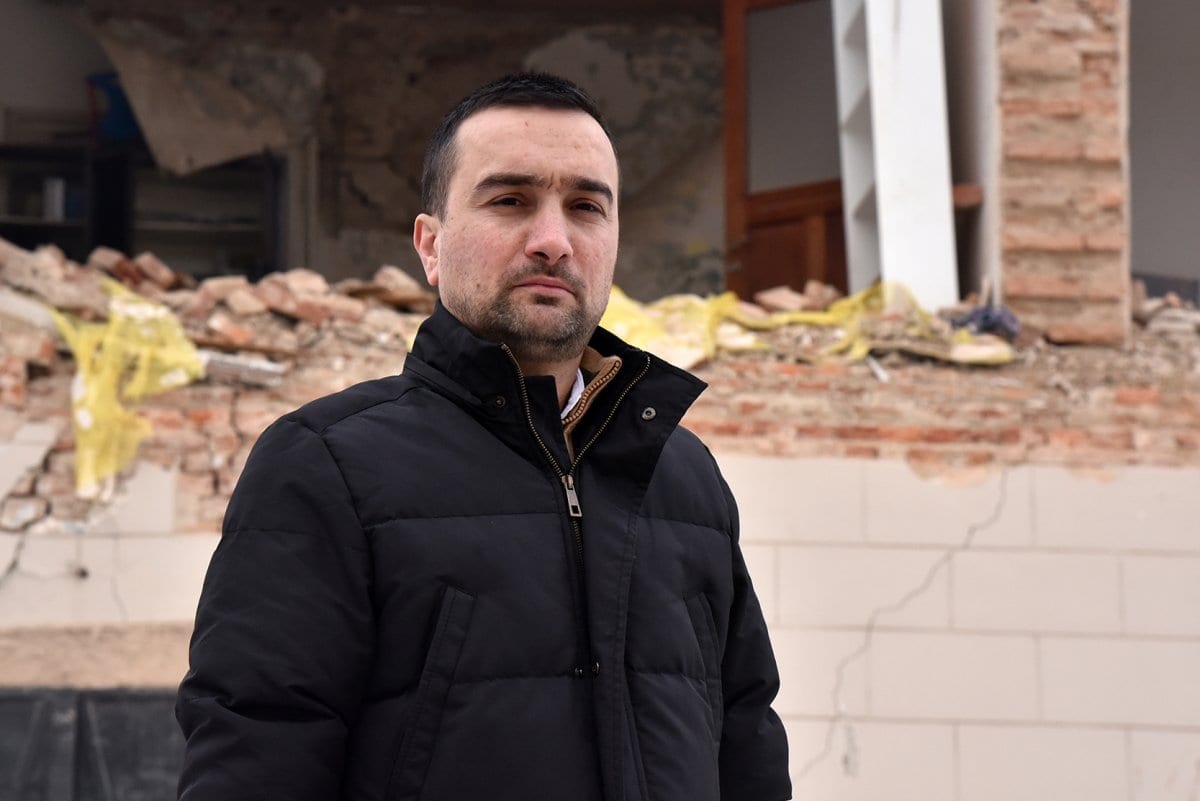
“Before the state took over the preparation of meals from volunteers, the food was much better and more varied. Now they serve canned cabbage every day,” Umičević reveals. Who wants to eat cabbage every day, we ask rhetorically. “Of course,” Ćutilo agrees.
In front of the damaged Church of St. Nikola and its graveyard, we are met by Milijana Nožinić from the Serb National Council, but also from the village Jošavica near Petrinja. “Now the whole of Croatia sees that we have neither asphalt roads nor a telephone signal in villages like mine,” she adds. There is no signal here, and the fact that there is still no electricity in some places in Lika, the birthplace of the inventor of the alternating current, Nikola Tesla, has become a well-known absurdity.
“The Church of St. Nikola dates from the time of the founding of the Petrinja parish, the beginning of the 19th century. The graves of the first parish priests of Petrinja are here. The Petrinja parish had twenty functioning churches before the Second World War, five after it, and now it has none. They will be built again, but life cannot be brought back,” Umičević says.
The Petrinja parish had twenty functioning churches before the Second World War, five after it, and now it has none. They will be built again, but life cannot be brought back
Graves have shifted due to the earthquake, and a geodetic analysis will show by how much.
“Seven hundred homes belong to the parish,” Umičević continues. “Its diameter is 160 km, encompassing Petrinja and 55 villages. I come from Putinci in Vojvodina. It would be unusual to go from there to Belgrade to officiate at funerals, and we sometimes cover such distances here,” he says.
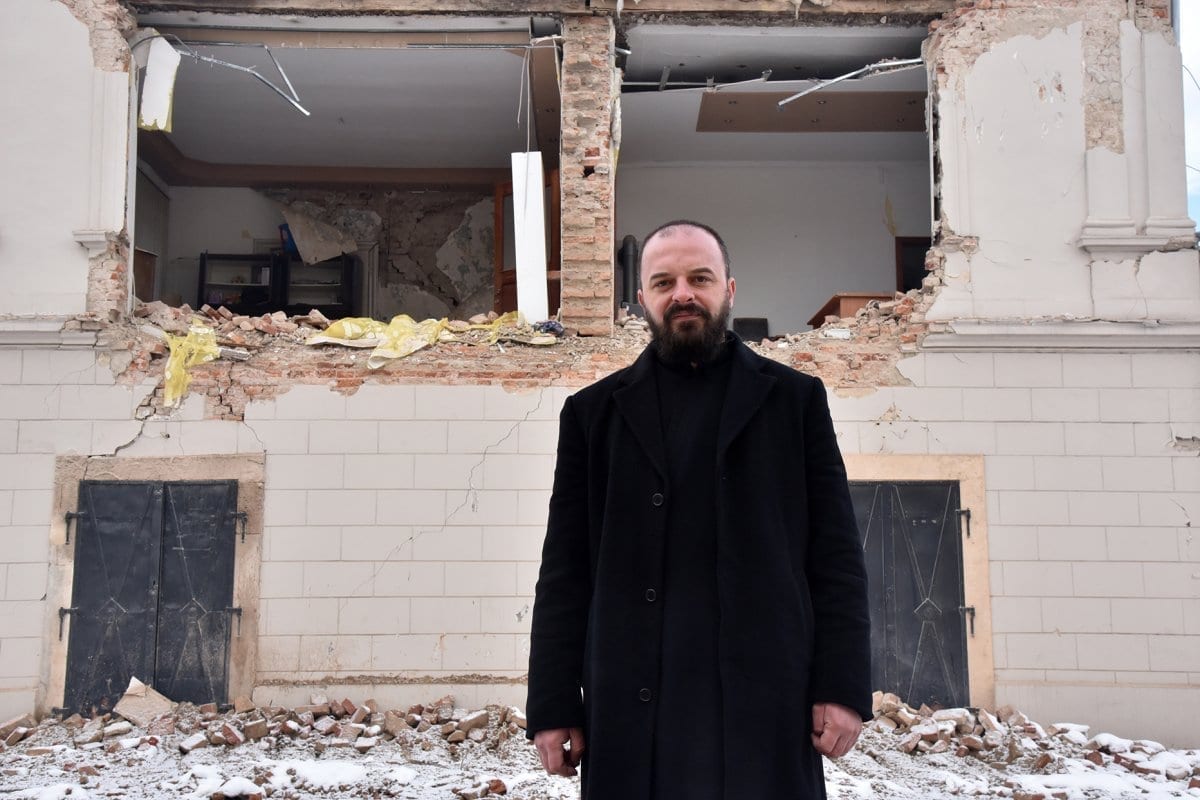
The same church – rebuilt for the fourth time
We go back to the city center, to the spot where the Church of St. Spyridon is being built. Fourth time’s the charm, we would say, for the first church in Petrinja dedicated to this saint, built near the end of the 18th century by 89 prominent Petrinja citizens, was destroyed by the Ustasha in 1941. The new church, built in 1976, was destroyed in 1991. This building housed the iconostasis made by Karlovac painter Đorđe Petrović. Three years later, the citizens started building the same church anew, but what had been built was torn down a year later, and a parking space was built at the site. Now the church is being built again.
“The Church of St. Spyridon will be a beautiful ornament of the city. Architecturally, it will not stand out from the surrounding buildings, but rather fit into the ambient,” Umičević says.
Who else could we find in Petrinja’s center in such a situation if not the omnipresent Andrija Jarak from Nova TV, the best-known TV reporter? The locals recognize him, approach him on their own and give their comments – it’s almost enough for him to stand in one spot to get a news report.
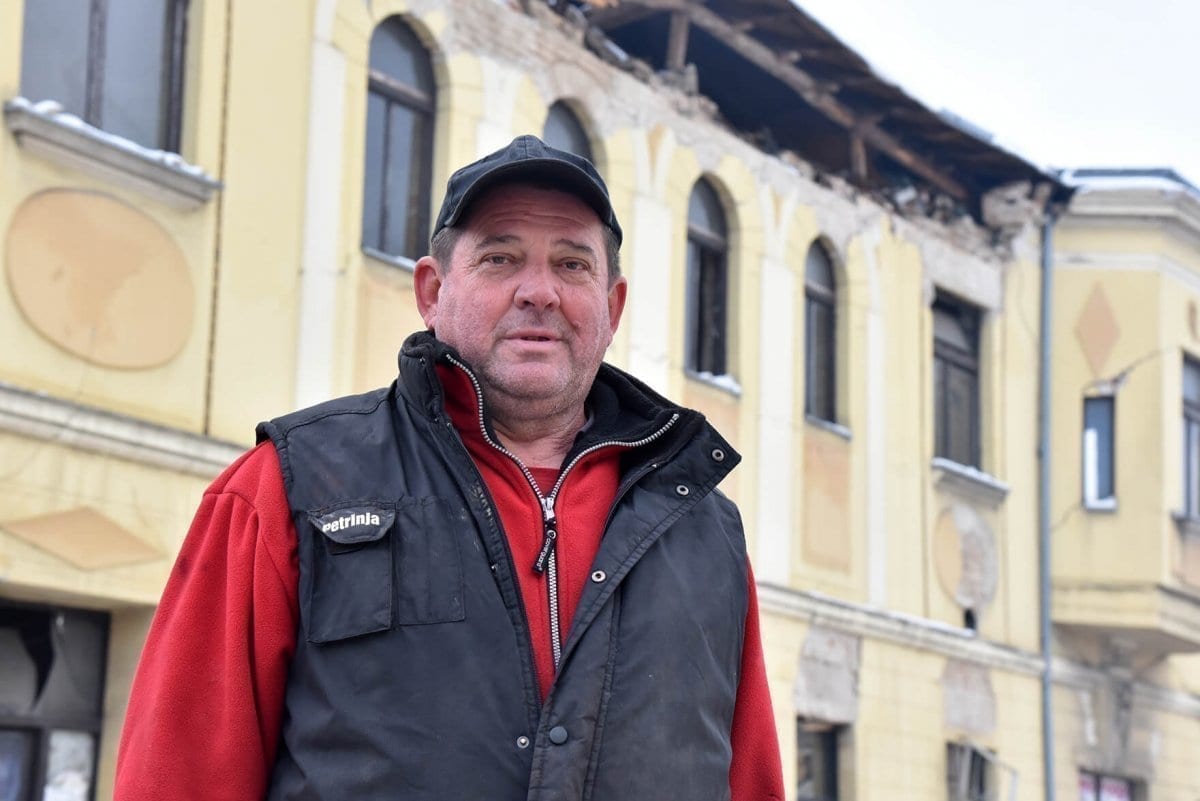
In front of what was once the Banija Hotel (not Banovina), across from the ruinous parish house, we find Željko Vujnović, whose wedding was held in the restaurant of this hotel with 18 rooms on July 31, 1982, on the very day when the town center was battered by a whirlwind, which missed Vujanović by a few minutes. With him is Dragutin Tokić, who worked in this hotel for 38 years, until retirement, and they are soon joined by a musician from Vujanović’s wedding. “There is no hotel here now. There is no industry, nor anything else. Everything is neglected in Banija,” Vujanović says.
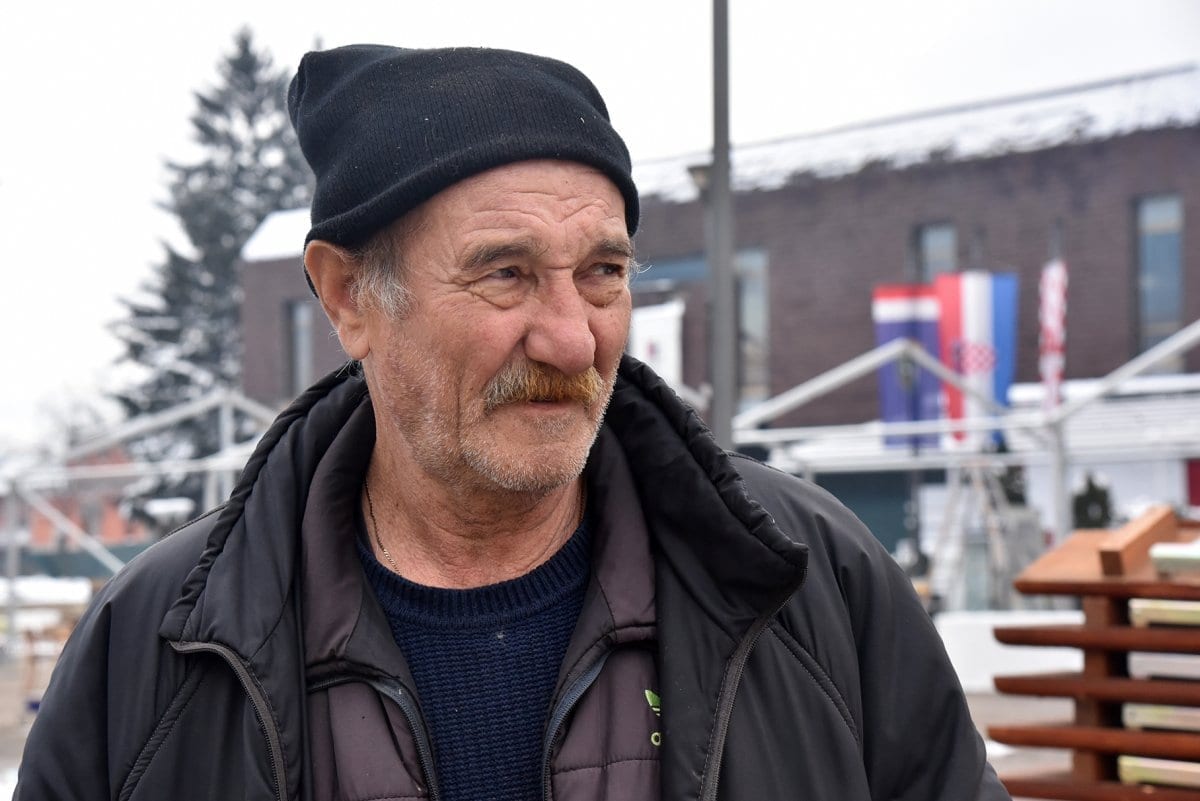
Glina has been damaged for a long time
Glina, where we went next, looked run-down before the earthquake – many buildings have remained ruinous since the war. Its main street, however, now looks better than the center of Petrinja, but only that street. House Peleš, where the Croatian anthem, composed by Josif Runjanin, was first played and sung, is undamaged, but this whole town has nevertheless been damaged for a long time. That house, in fact, had been destroyed during the war, and a replica was built later.
As long as you stay alive
“As long as you stay alive, it’s alright,” cattle farmer Đuro Bakić comments on the recent earthquakes.
We find him in Majske Poljane. Upon arriving to this, now very well-known, village, we suddenly had to stop because of work on the power lines, and on this stop we met the tireless Branka Bakšić Mitić, the deputy mayor of Glina, who directed us to a parking spot. This politician, who became widely known during these troubles, has taken even this task upon herself.
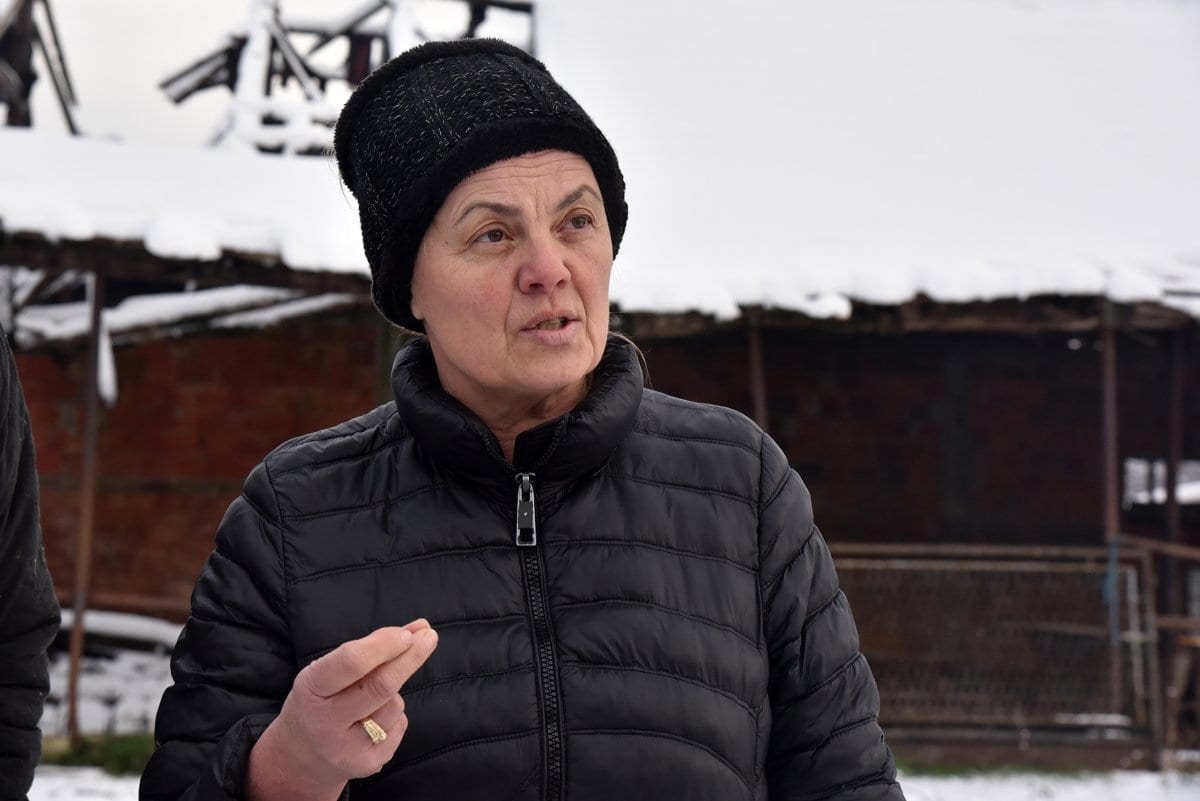
She has detailed insight into all the issues; she is constantly in the field, overseeing the repairs, and she led us to Bakić. “Let the government of Serbia rebuild one Banija village. Let them at least asphalt the roads in Majske Poljane,” she says to the men from Vojvodina. Her active efforts stand out even more when compared with the unsatisfactory performance of Mayor Stjepan Kostanjević. “He is nowhere to be seen,” one local mentioned to another in front of the town store.
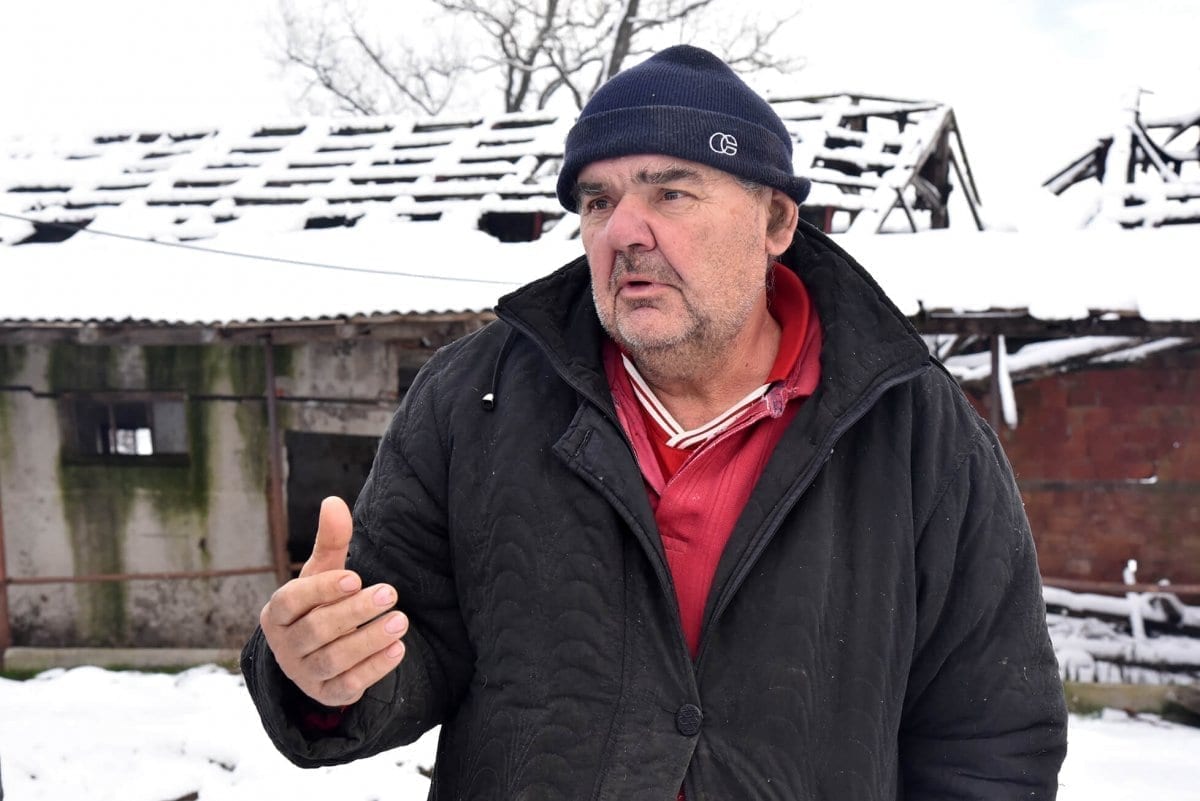
Đuro Bakić’s bulls escaped during the earthquake. They are smart animals, he says, because “when you see a rabbit run away, you run, too.”
“There were ten bulls and eight or nine calves. The cows have returned, the bulls have not,” he tells us.
His family is housed in a container.
“We fatten bulls and sell meat. Before the war we produced milk, but we gave up on that because of the low purchase price,” he explains. “I went into logging for a while, but I couldn’t stand that – you go mad trying to find the owners and make a deal,” he adds.
He returned from Stara Pazova, where he went as a refugee. His house, now unusable due to the damage in the earthquake, was rebuilt after the war by a Norwegian fund.
“We have been in Majske Poljane for three hundred years. There are no mixed marriages here. When we combined agriculture and industry, we lived nicely – we would work in the ironworks and raise cattle at home,” he says.
When the old die, this will become desolate
The Glina parish is headed by thirty-year-old Goran Kalamanda, who arrived here a year and a half ago from the Banja Luka area. “I haven’t had any problems as a Serb in Glina, nor have I had complaints about this from the parishioners,” he says.
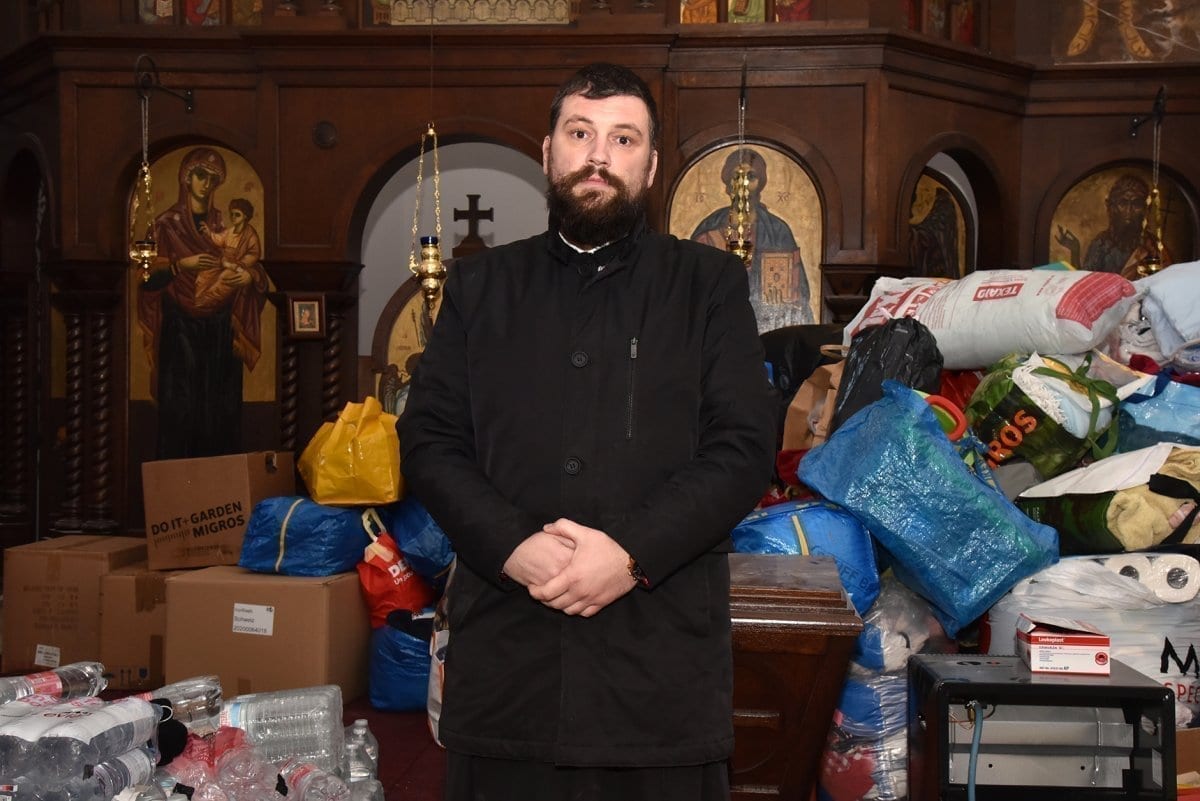
His parish also encompasses a wide and sparsely populated area with around nine hundred Serbs. “These people have been through a lot, and an earthquake was the last thing they needed. Nothing is certain anymore,” says Kalamanda, who went with us to Bakić in Majske Poljane. He adds: “There aren’t many young people – some thirty children attend religious education classes. Villages are mostly deserted. There were some people in Majske Poljane, but when the old die, this will become desolate.”
It is well known that on May 12, 1941, there was a massacre of Serbs in the Glina church. A Croatian Home is now on that spot. A new church was built in 1963, and now, damaged as it is, it is used for storing humanitarian aid.
“The people went to Christmas liturgy to Topusko,” Kalamanda says, after which we said goodbye and, since the sun was setting and the air temperature dropping, washed our windshield with snow and left Banija. We no longer, however, complained about the travel conditions – unlike many people of Banija, we headed towards our own four walls, the warmth of our own homes.
Translation from Croatian: Jelena Šimpraga

